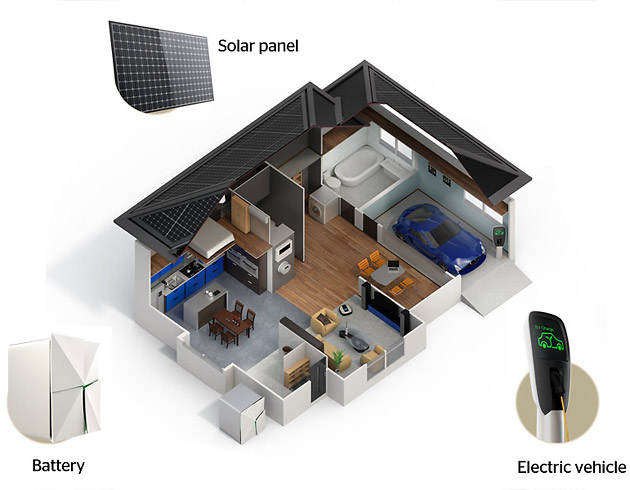18 April, 2017 By: Simon Nettle
Vehicle-to-grid technology could potentially overcome one of the major barriers to fully renewable electricity generation. How does it work?
Now technology is finally catching up with the advent of electric vehicles (EVs) also leading to the development of vehicle to grid (V2G) technology. What does that mean in real-speak?
According to Sami Zouad, Synergy’s strategy and innovation manager, V2G technology has the power to make every home an energy supplier.
“Within just a few years, V2G technology could unlock the full benefits of renewable power generation and reduce the overall cost of electricity to consumers across Australia. It’s exciting stuff.”
The next step in renewable power?
So how does it all work? First you need to understand how V2G can fit in the electricity cycle.
Currently, renewable energy is only generated when the sun shines or the wind blows. Which is not all the time. This presents a huge problem for electricity suppliers - it means they still require coal and gas generators to make sure there is a continuous supply of power. It also means solar-powered homes must remain connected to the electricity grid to have constant power in the home.
A further challenge is that most solar power is created when nobody’s home to use it and when supply is plentiful and cheap.
Storing it by installing an ‘in-home battery’ is possible, but when a fully installed high-capacity system can cost upwards of $16,000, it’s out of the price range for most ordinary households.

"V2G allows electric vehicles – whenever they’re plugged into a vehicle-to-grid enabled charging station – to extract power to charge up the car battery, or to discharge the stored power into the grid to power your home," says Zouad.“However the uptake of electric vehicles could change that. The beauty of electric vehicles (EVs) is that they have a big battery. So the battery in your electric car takes the place of your in-home battery, markedly reducing the cost of in-home energy storage.
This means EV owners can use the spare energy in the car’s battery to power their home in the evening. It’s particularly useful if you can charge your EV while you’re at work during the day and then use that power at night.
“Overall, the process should lower the cost of your at-home electricity use."
Enjoying this article?
Sign up to our monthly enews
Taking V2G mainstream
While EVs can be used as a backup energy source for your home, the technology is currently only suitable for individual drivers. For larger corporate buildings and businesses, it’s still more convenient to connect to the grid when the solar supply dips.
Before V2G can be fully realised in Western Australia, EVs will need to become far more common.
Also needing to change is EV battery prices – the cheaper they are the more cost-effective using them becomes. This is particularly important given you will need more than one EV battery in your lifetime. At the moment, batteries can last as long as eight years, but their life-span depends on a number of factors including temperature and how frequently you charge your battery.

“When it came to solar panels, no one predicted how rapidly their price would fall once consumer demand was sufficient to incentivise innovation.
“There’s no reason why car batteries won’t follow a similar trend," he says.
“Once the technology is established, electricity suppliers like Synergy, will be able to have a more ideal balance of renewable and conventional electricity generation. As a result, they’ll be able to offer much more affordable rates to their customers.
“V2G technology will mean we can finally use solar power to its full potential.”
Enjoy this story? Get more of the same delivered to your inbox. Sign up to For the Better eNews.
